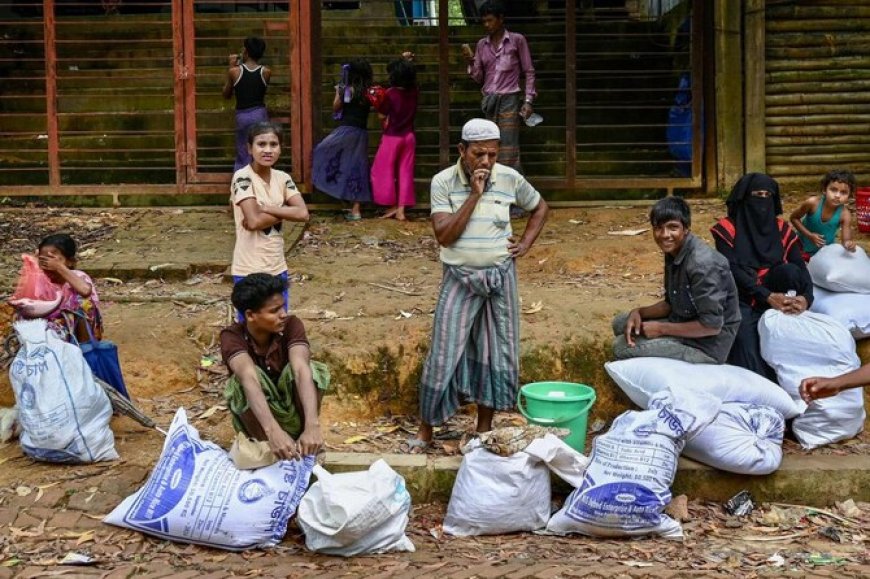Red Cross Urges for Humanitarian Corridors in Conflict-Ravaged Myanmar
The International Committee of the Red Cross (ICRC) is ramping up efforts to secure humanitarian corridors into Myanmar, a country gripped by violent conflict and humanitarian collapse. With vast regions devoid of basic medical services and food supplies, the ICRC is engaged in urgent negotiations with Myanmar’s military junta, opposition groups, and neighboring countries to deliver aid across its borders.

The International Committee of the Red Cross (ICRC) is ramping up efforts to secure humanitarian corridors into Myanmar, a country gripped by violent conflict and humanitarian collapse. With vast regions devoid of basic medical services and food supplies, the ICRC is engaged in urgent negotiations with Myanmar’s military junta, opposition groups, and neighboring countries to deliver aid across its borders.
Myanmar has been in turmoil since February 2021, when the military overthrew the democratically elected government of Nobel laureate Aung San Suu Kyi. The coup triggered mass protests that evolved into a widespread armed insurgency against the powerful military regime. Nearly three years later, the country is in the midst of a brutal conflict that has displaced millions, with an estimated 18 million of Myanmar's 55 million people now in dire need of humanitarian assistance.
“There’s a total absence of medical services in certain regions, I mean, a complete collapse,” ICRC President Mirjana Spoljaric told Reuters, following a visit to Myanmar earlier this week. “There’s not even medicine coming in at the moment, and there’s very little food available.”
Desperate Need for Aid Amid Restricted Access
The ICRC’s ability to deliver aid has been severely hampered by access restrictions imposed by the military regime and the volatile security situation in many parts of the country. Humanitarian workers are unable to assess the full scale of needs on the ground due to the lack of safe access to conflict zones.
During her visit, Spoljaric met with Myanmar's junta chief, Senior General Min Aung Hlaing, to discuss expanding the ICRC’s humanitarian operations. She emphasized that the Red Cross has the capacity to provide more assistance but is facing critical barriers. “The problem is access,” Spoljaric said. “We need to remedy this because we can’t even assess the humanitarian needs in many areas, and that’s crucial.”
The collapse of medical infrastructure is most evident in remote and conflict-ridden regions, where hospitals and clinics have been destroyed, medical staff have fled, and the ongoing fighting makes it impossible to deliver supplies.
Cross-Border Aid as a Solution?
To circumvent the obstacles within Myanmar, the ICRC is exploring the possibility of delivering aid through neighboring countries, including Bangladesh and Thailand. “The cross-border issue is on the table,” Spoljaric noted, referring to ongoing discussions with these countries and other regional actors.
In March 2024, Thailand facilitated the delivery of some humanitarian aid into Myanmar, as part of a broader initiative led by the Association of Southeast Asian Nations (ASEAN). This ASEAN-backed humanitarian corridor is seen as a potential model for future aid deliveries, but such efforts require the cooperation of all parties involved in the conflict.
Spoljaric stressed that opening these corridors could also serve as a stepping stone toward local ceasefire agreements in specific areas. “The lesson learned is that you need to have everybody’s agreement in order to operate,” she said. “This could potentially provide entry points for some level of ceasefire negotiations going forward.”
Bangladesh as Another Key Player
Bangladesh, which shares a border with Myanmar’s Rakhine State, is also a critical player in the efforts to deliver aid. Rakhine has been the site of intense fighting between the military and the Arakan Army, an ethnic rebel group that now controls significant portions of the state. This conflict has led to a new wave of Rohingya refugees fleeing to Bangladesh, where over a million Rohingya already live in sprawling, overcrowded camps.
While the ICRC continues to engage in direct dialogue with all parties to the conflict, including armed groups, the challenges remain steep. Spoljaric noted that diplomatic efforts are underway to enlist the support of states that could influence the warring factions.
“I am hoping that my meeting with the chairman [Min Aung Hlaing] will improve channels of communication and will at least show some openings on their side to increase operational space,” she said.
A Humanitarian Crisis Worsening by the Day
Myanmar’s humanitarian situation is deteriorating at an alarming rate. Ongoing fighting, coupled with the regime’s restrictions on aid workers and journalists, has made it difficult to gauge the full scope of the crisis. What is clear, however, is that millions of civilians are caught in the crossfire, with little to no access to basic necessities.
The Red Cross, known for its impartial stance in conflicts, faces a delicate balancing act as it navigates between the junta, rebel groups, and neighboring states. But with humanitarian needs escalating by the day, time is running out for the people of Myanmar.
As the ICRC pushes for solutions, international pressure on the Myanmar junta is likely to increase. Whether these efforts will result in meaningful access for aid organizations remains uncertain, but for now, the Red Cross continues its mission, undeterred in its commitment to providing relief to those most in need.













































